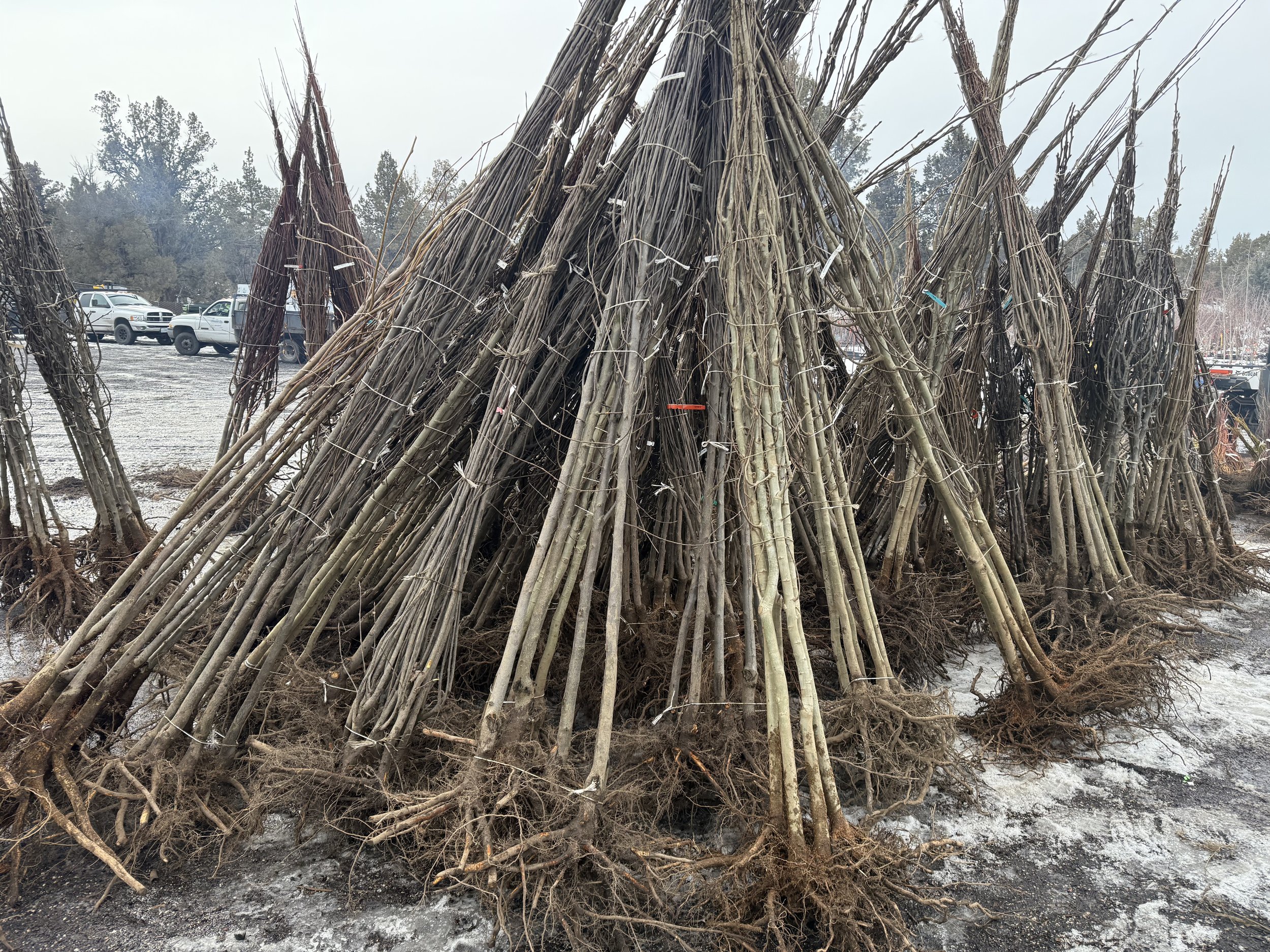
Next Bare Root Pre-Order Sale-January 2026
Next Bare Root Pre-Order Sale-January 2026
What are bare root plants?
A bare root plant is a plant that is sold without soil surrounding its roots. These plants are typically harvested while dormant (usually from late fall to early spring) and have their roots carefully cleaned of soil. Because they are dormant, bare root plants are easier to transport and generally less expensive than potted plants. Bare root plants need to be planted in early spring, before they wake up from dormancy, to ensure strong growth. Our bare root pre-order period typically takes place from January to February each year, offering a fantastic selection of fruiting and ornamental deciduous trees and shrubs. Get on our mailing list so you’r the first to know when the pre-order is up on our website!
Why choose bare root plants?
Bare root trees offer several advantages over potted trees, making them a smart choice for many gardeners.
Lower Cost: Bare root trees are generally more affordable than potted trees. Because they don't come with the added cost of soil and containers and labor that goes into potting them up, they offer great savings.
Less Transplant Shock: Since bare root trees are sold while dormant and have minimal root disturbance, they often experience less transplant shock when planted. This allows them to establish more quickly in their new environment.
Easier to Handle: Bare root trees are lighter, smaller, and more compact than potted trees, making them easier to store, handle, and transport.
Better Root Development: Because the roots are not constrained by a pot, bare root trees have more room to grow freely. This often results in a stronger, healthier root system once planted in the ground.
Ideal Planting Time: Bare root trees are usually planted in early spring while dormant, ensuring that they are ready to take advantage of the growing season. This timing helps promote healthy growth and establishment in the new location.
Caring for Bare Root Plants Before Planting
You can store bare root trees either indoors or outdoors, but it's crucial that the roots are not exposed to freezing temperatures, which can cause severe damage.
Indoor Storage: Store them in a cool, shaded area like a garage or basement. To prevent drying out, cover the roots with soil, mulch, or even sawdust and keep them in a plastic bag or box to maintain moisture. Ensure proper ventilation to prevent mold, and avoid airtight containers.
Outdoor Storage: If storing outside, “heel in” the roots by burying them in a shallow trench, covering with soil or mulch for insulation. This protects them from freezing. Avoid direct contact with snow or standing water.
General Care:
Inspect roots for damage and trim any broken or rotting parts.
Soak the roots for 2-4 hours before planting to rehydrate them.
If not planting right away, you can store the roots in water for up to 24 hours.
By keeping the roots cool and protected from freezing, you ensure they remain healthy until you’re ready to plant.
Bare Root Planting Instructions:
Choose the Right Location
Select a site with full sunlight and well-drained soil to ensure optimal growth for your tree.Prepare the Planting Hole: Dig a hole that is wide enough to accommodate the tree’s root spread or branch spread. The hole should be 18-24 inches deep. Fill the hole with water and let it drain completely to ensure moisture is present below the tree.
Create a Mound: In the center of the hole, build a pyramidal mound using a 50/50 mix of soil and compost. This mound will support the tree’s roots and help with drainage.
Planting the Tree: Place the bare root tree on top of the mound, ensuring that the graft (where the tree meets the rootstock) sits slightly above the surrounding soil level. Gently spread the roots out along and down the mound to avoid crowding or bending.
Backfill and Water: Begin filling the hole halfway with your soil-compost mix. Pause to water thoroughly, ensuring the roots and soil are properly settled. Finish filling the hole, tamping down the soil to eliminate air pockets. Water again to ensure the roots are well-moistened.
Mulching: Add a layer of mulch around the base of the tree to help retain moisture and protect the roots.
Staking (if necessary): If the tree is tall or in a windy area, pound three stakes around the tree. Use padding to protect the trunk and tie the tree to the stakes to help stabilize it during its first year.
Ongoing Care: Water the tree once a week, especially during warm temperatures or dry periods, until the weather warms to spring levels and regular seasonal irrigation begins.


